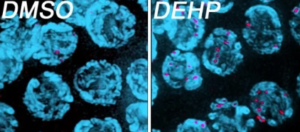Over 77 per cent of India’s children lack WHO-suggested diversity in diet, study finds
New Delhi, Oct 23 (PTI) About 77 per cent of children in India aged 6-23 months lack diversity in diet as suggested by the WHO, with the country’s central region showing the highest prevalence of minimum dietary failure, a study has found.
The states of Uttar Pradesh, Rajasthan, Gujarat, Maharashtra and Madhya Pradesh reported the highest levels of inadequate diversity in children’s diets — all above 80 per cent — while Sikkim and Meghalaya were the only two to report an under-50 per cent prevalence.
The World Health Organisation (WHO) suggests using the Minimum Dietary Diversity (MDD) score to evaluate the quality of a child’s diet — it is considered to be diverse if it contains five or more food groups, including breastmilk, eggs, legumes and nuts, and fruits and vegetables.
Analysing National Family and Health Survey data from 2019-21 (NFHS-5), researchers, including those from the National Institute of Health and Family Welfare, found that the country’s overall rate of minimum dietary diversity failure has dropped from 87.4 per cent, which was calculated using data from 2005-06 (NFHS-3).
However, “our study shows that the prevalence of minimum dietary diversity failure remains high (above 75 per cent) in India,” the authors wrote in the study published in the National Medical Journal of India.
The team also looked at children’s dietary habits across various food groups like proteins and vitamins, comparing data from 2019-21 with that from 2005-06.
The consumption of eggs registered an “impressive” rise, from around 5 per cent in NFHS-3 to over 17 per cent in NFHS-5 while that of legumes and nuts increased from nearly 14 per cent during 2005-06 to over 17 per cent during 2019-21.
“The consumption of vitamin A-rich fruits and vegetables increased by 7.3 percentage points, whereas the consumption of fruits and vegetables increased by 13 percentage points over the same time. For flesh foods, the consumption increased by 4 percentage points,” the authors wrote.
However, the consumption of breastmilk and dairy products was found to drop from 87 per cent in NFHS-3 to 85 per cent in NFHS-5 and 54 per cent to 52 per cent, respectively.
The authors also found that the children of illiterate and rural-residing mothers having no exposure to mass media, those born first and not exposed to counselling and health check-ups at Anganwadi or Integrated Child Development Services (ICDS) centres were more likely to be consuming diets deficient in diversity.
Anaemic children and those having a low birth weight were also found to have a higher chance of consuming a non-diverse diet.
To tackle the issue of inadequate diversity in children’s diets, the authors called for a holistic approach from the government, including an improved public di






